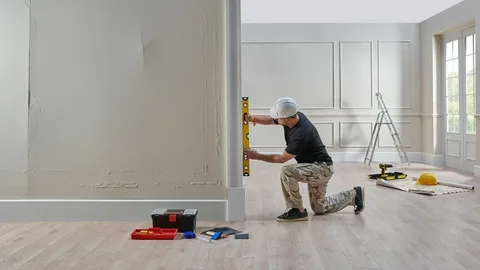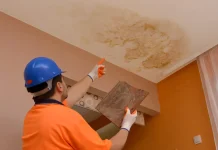Buying your first home is an exciting milestone, filled with dreams of independence and financial security. But along with that excitement comes a new level of responsibility, especially when it comes to home repairs. Unlike renting, where a landlord handles maintenance issues, owning a home means you’re in charge of everything from leaky faucets to major roof work.
Understanding what to expect and how to prepare can save you time, money, and stress. Whether you’re still house hunting or just moved in, this guide will help you navigate the essential repairs and upgrades that first-time homeowners often encounter.
Table of Contents
Expect Repairs Sooner Than You Think
It’s a common misconception that repairs won’t be needed for years after buying a home, especially if the property seems move-in ready. In reality, even newer homes can have hidden issues, and older homes almost always come with maintenance needs. From outdated plumbing to worn-out roofing, surprises are part of the process.
That’s why it’s important to budget not only for your mortgage and utilities, but also for inevitable home repair costs. Experts recommend setting aside 1% to 3% of your home’s value annually for maintenance and repairs.
Prioritize Safety and Structural Issues
When creating a repair to-do list, focus on the most important systems first:
- Roof
- Electrical wiring
- Plumbing
- HVAC (heating, ventilation, and air conditioning)
- Foundation and structural elements
These areas affect your home’s safety, livability, and long-term value. Ignoring them can lead to bigger, more expensive problems down the line. If you suspect an issue in one of these categories, get a professional inspection right away.
Learn the Basics of Preventive Maintenance
Some repairs can be avoided altogether with regular preventive care. Keeping your gutters clean, sealing small foundation cracks early, and servicing your HVAC system can help you avoid major damage. The more proactive you are, the more you’ll save in the long run.
It’s also smart to create a seasonal home maintenance checklist so you stay on top of things. Spring, summer, fall, and winter all bring different maintenance needs depending on your climate and home style.
Roof Repairs Deserve Special Attention
One of the biggest and most expensive repairs you might face as a first-time homeowner is your roof. A damaged or aging roof can lead to leaks, mold growth, and even structural issues inside your home. That’s why routine inspections and timely repairs are critical.
Many homeowners worry that replacing a roof will break the bank, but some solutions make it more manageable. Working with the right contractor can help you find an affordable roof replacement option that meets your budget without compromising on quality or durability.
It’s also worth noting that many roofing companies offer financing or phased payment plans to make the cost easier to handle.
Watch for These Common First-Year Repairs
Here are some of the most frequent issues first-time homeowners encounter within the first year:
- Leaky faucets or running toilets
- Clogged gutters or downspouts
- Drafty windows and doors
- HVAC inefficiencies or failures
- Appliance breakdowns
- Pest control needs
- Roof leaks or damaged shingles
Some of these you can fix yourself with a little research and elbow grease. Others, like HVAC and roofing issues, should be left to professionals.
Tips for Choosing the Right Repair Professionals
You don’t need to be an expert in every system of your home, but you do need to know how to choose the right experts. Start by:
- Asking for referrals from friends, family, or neighbors
- Reading online reviews and checking company credentials
- Comparing quotes from at least two or three service providers
- Asking about warranties and guarantees on the work
A reliable contractor won’t pressure you into unnecessary repairs. They’ll explain the issue, suggest options, and help you make the most informed decision.
How to Stay Ahead of Big Expenses
Planning is one of the most powerful tools in your homeowner’s toolkit. Instead of waiting for something to break, take the time to learn your home’s current condition and expected repair timeline.
Here are a few proactive steps you can take:
- Get a full home inspection, even if one was done during purchase
- Schedule annual service for your HVAC system
- Have your roof professionally inspected every two to three years
- Keep a binder or digital folder of receipts, repair notes, and contractor contact info
- Set up reminders for regular maintenance tasks
Quick Guide: First-Time Home Repair Tips
Keep this checklist handy to stay on top of your new responsibilities:
- Review your inspection report to plan for upcoming repairs
- Budget for annual maintenance and emergencies
- Prioritize health, safety, and water damage risks
- Learn which tasks you can do yourself vs. hire out
- Schedule regular roof, HVAC, and plumbing inspections
- Don’t delay addressing minor issues—they grow fast
- Build a trusted list of go-to contractors early on
The Bottom Line
Homeownership is one of the most rewarding investments you can make—but it’s also one of the most hands-on. Being prepared for repairs, knowing where to start, and having a plan will help you protect that investment and keep your new home safe and comfortable.
If you suspect roof damage or know that the roof will need attention in the next few years, don’t wait until it becomes a crisis. Look into options for an affordable roof replacement that fits your home’s needs and your budget. Taking action early can save you thousands and give you peace of mind as a new homeowner.








